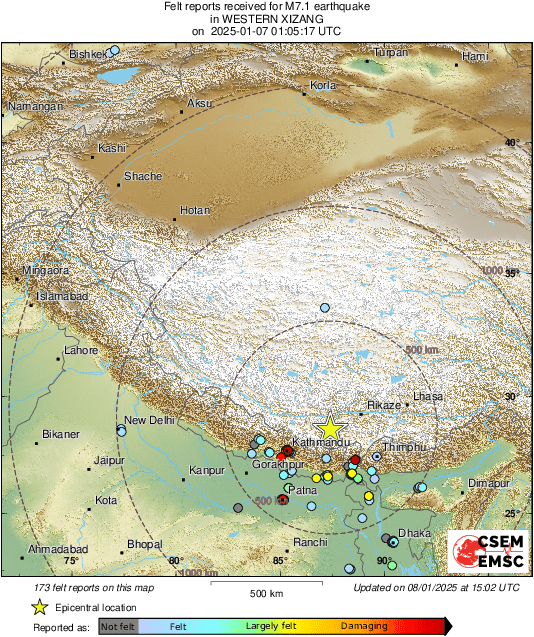Mw 7.1 WESTERN XIZANG on January 7th 2025 at 01:05 UTC
Last update: 8 January 2025 at 09:46 UTC
On January 7, 2025 at 01:05 UTC (06:35 local time) an earthquake of magnitude 7.1 struck WESTERN XIZANG, 194 km NW of Dārjiling, India.. Seismological information can be found here.
At the time of this report, several buildings have been damaged. In Dingri County, more than 1000 houses have collapsed. In addition, local authorities report more than 126 dead and 188 injured.
More than 109 earthquakes have been recorded in the last 24 hours since the earthquake struck. Some of them were felt by the population.
If you have felt this earthquake, please share your experience with us. Your testimony will be useful to update the intensity map here below, where the felt intensities represent the effects of the earthquake over the impacted area.
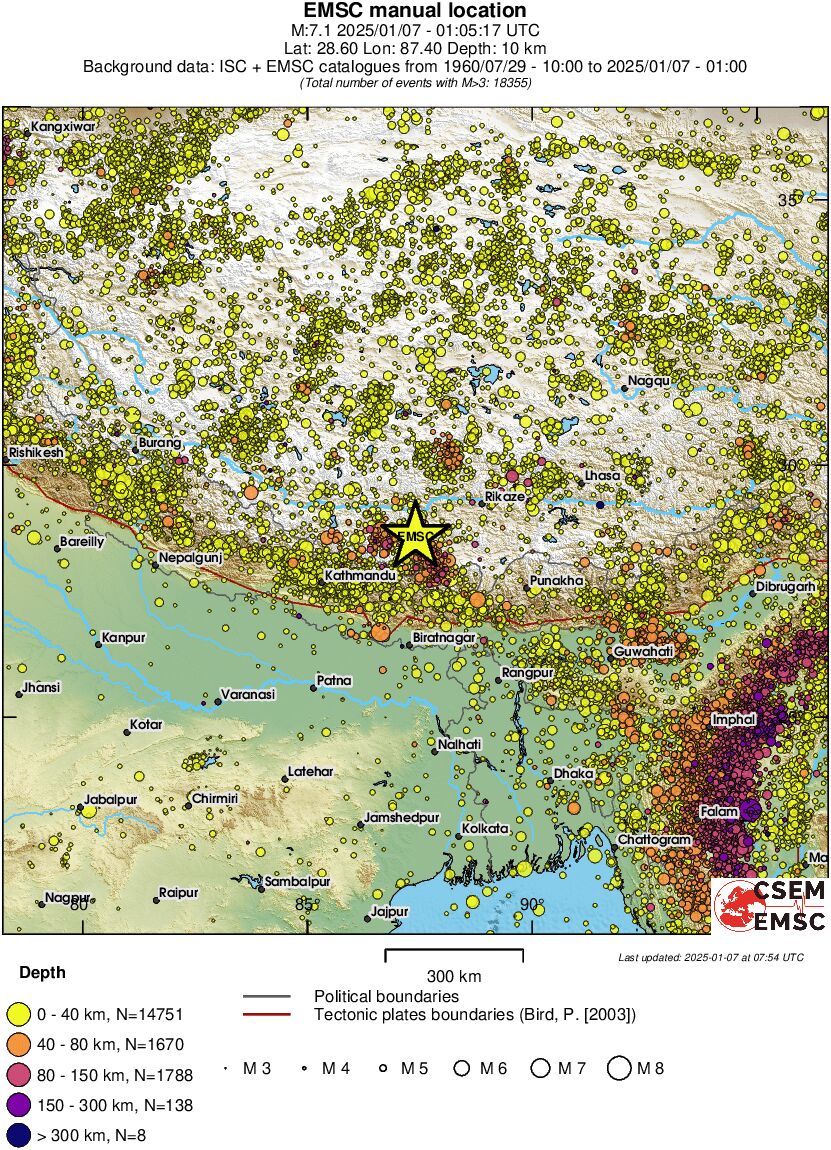 |
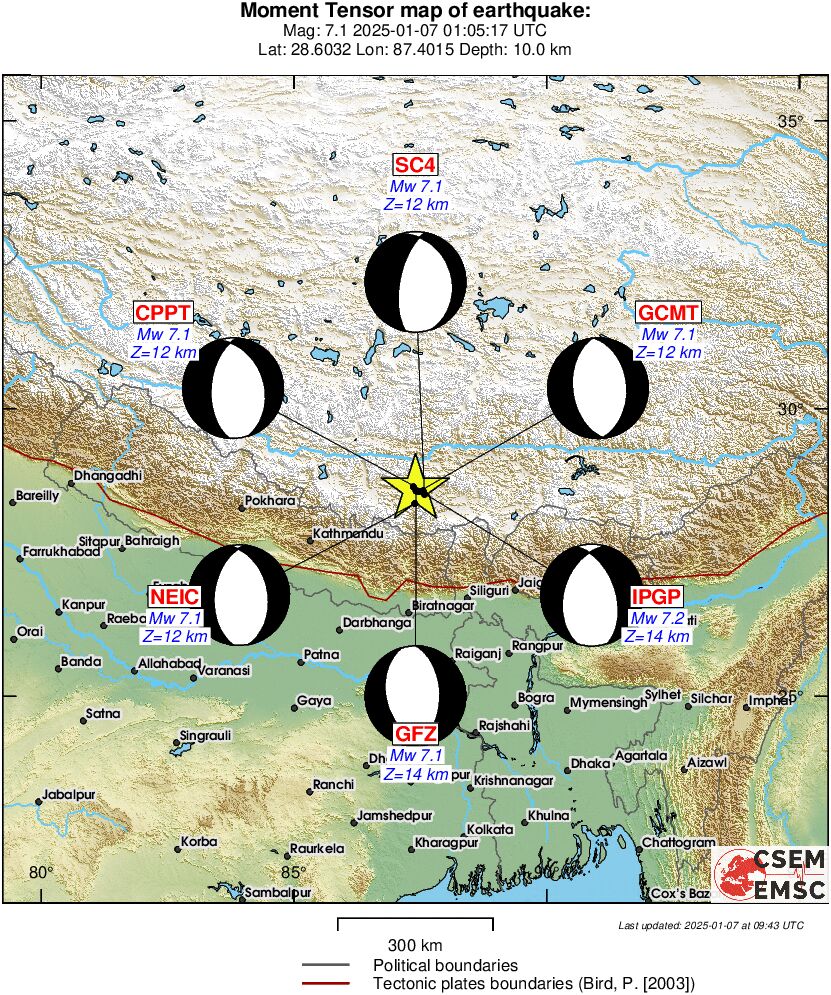 |
| Past Regional Seismicity as from the ISC catalogue (1964-2004) and EMSC Real Time catalogue (2005-today) | Moment tensors solutions received at EMSC |
After a large earthquake, a lot of smaller earthquake may occurs in the area of the main shock. They are called aftershocks and are caused by the adjustment of the crust to the effects of the main shock. Below is a summary of the recorded aftershocks. It is likely that there will be more in the coming days. If you are in the affected area, please remain cautious.
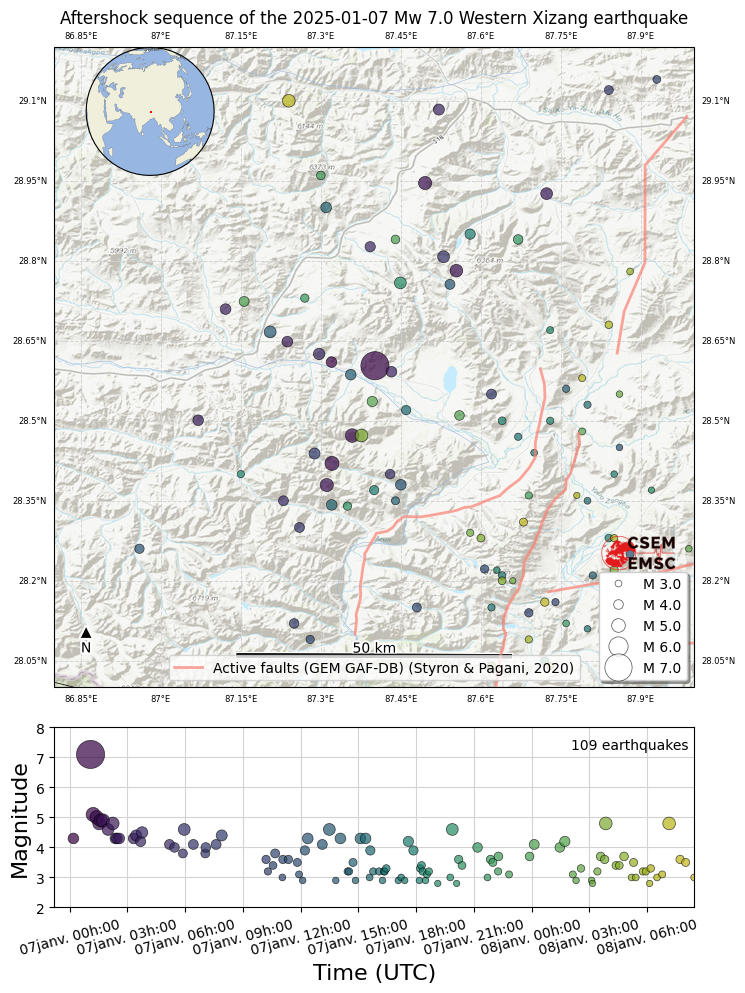 |
| Map of aftershocks updated on 2025-01-07 |
- Map of felt reports
The EMSC collects testimonies from people who felt the earthquake. This information is collected through the LastQake mobile application, mobile or desktop website. The map below shows the testimonies collected by the EMSC for the main shock. Each coloured dot corresponds to a witness observation, which we call a "felt report". The redder the dot, the more intense the earthquake was felt.
By aggregating the reports, we can quickly map the effetcs of the earthquake.
- Curve Intensity / Distance
This graph shows the change in intensity as a function of distance from the epicentre. Intensity ranges from 1 to 12 and measures the observed effects of the earthquake in terms of shaking and damage at a given location. An earthquake is therefore associated with one magnitude and a variety of intensities, depending on where it is observed. For example, we can see that at a distance of 300 km from the epicentre, the average intensity is around 4. Moreover you can notice the general trend that the further you are from the epicenter, the less intensively you feel the earthquake.
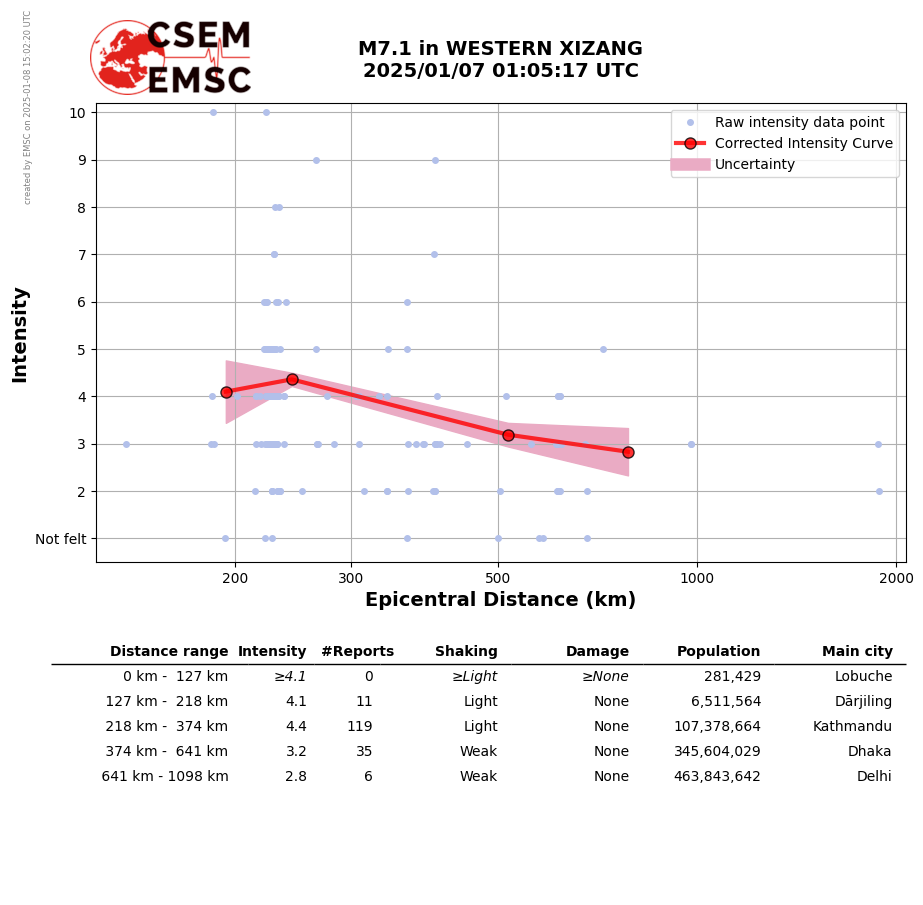 |
Did you feel the earthquake and take photos or videos of its effects (on buildings, ground, landscape)? Share your testimony with us using this link.
